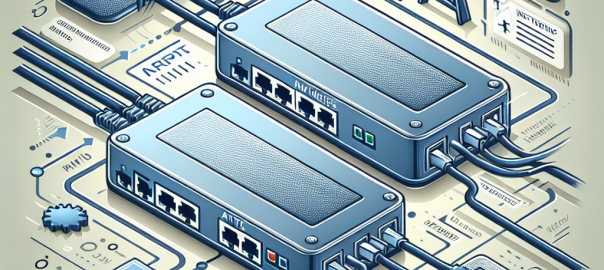This blog post is the second in a three-part series with the goal of answering questions you might have about Netezza networking. The first part concentrates on basic Netezza networking, whereas this second part covers more advanced networking concepts. For advanced configuration options, you can check out the upcoming third part of this blog post.
Network bonding
You have two hosts: active and passive. Each has its own IP address. These IP addresses are not floating. These are called host IPs. Since you want to have maximum redundancy on all components, there are actually two physical network devices virtually bound together to create virtual networking devices (one for each host). Both hosts have two physical network devices that carry one IP address. This is called network bonding.
Let’s say both of the hosts have network devices eth6 and eth7 and they create a coupled virtual device called bond2. We usually use bond0 and bond1 internally, so the first bonded device for external use is normally bond2.
For the virtual device bond2, you can assign an IP address and connect to a host. Both active and passive hosts will have this device and both of the hosts will have their own individual IP address, which is bound to this virtual device.
Virtual IP
If you think of this from an applications point of view, it wouldn’t make sense to connect to the host IP, since if the active host fails, you would need to re-configure applications to use the new active host, which has a different IP.
That’s why applications use virtual IP. Virtual IP is actually an IP alias, which is bound to an active host. Hosts run standard Linux operating systems, so if you are familiar with Linux, it’s easy to explain. If not, it’s still not rocket science. On Linux, you can easily add IP aliases on top of any physical, or virtual for that matter, network device . If you have physical network device eth0 with fictional IP address 192.168.1.100, you can add another IP address to that same physical device just by assigning an IP to device eth0:0. Next you add to device eth0:1 and so on.
In this case, you have virtual network device bond2, which is a bonded device having physical devices eth6 and eth7 behind it. If you lose eth6, you are still good as long as physical device eth7 is good. To connect to either of the hosts directly, you would use the IP address assigned to bond2 on the particular host, or rather the host name you have assigned in your domain name server (DNS) for that IP address.
Floating IP
As I said, applications connect to a virtual IP. The virtual IP is assigned to virtual network device bond2:0. It only exists on an active host. This is something called a floating IP, and it is always on the active host. If Host 1 fails, it will be on Host 2. If, as in my example, device eth6 fails, you have bonded device bond2, which consists of eth6 and eth7, the floating IP is still good on that same appliance as before.
There are two virtualization layers here. One is done though network bonding, the other is done through cluster software. If one of the network devices physically breaks, the network bonding will do the trick, and you are still good to go. If the other appliance breaks, you have clustering software, which can deactivate the bond2:0 on the failing host and create bond2:0 on new active host.
So the bond2:0 always has the virtual IP your applications are able to use. You should, of course, always assign host names in your DNS for this virtual IP, and use this host name in your applications instead of using IP addresses directly. That way, if you ever need to change the IP address for the virtual IP, you don’t need to change configurations for several applications. Instead, you just have to change the IP for the host name you have defined for the virtual IP in your DNS configuration.
What about changes to the default configuration?
I will cover advanced configuration options in part three of this blog post. If you have any network-related questions or suggestions, please add them below in the comments. You can also follow me on Twitter @TVaattanen to discuss more about Netezza.
 |  |  |

